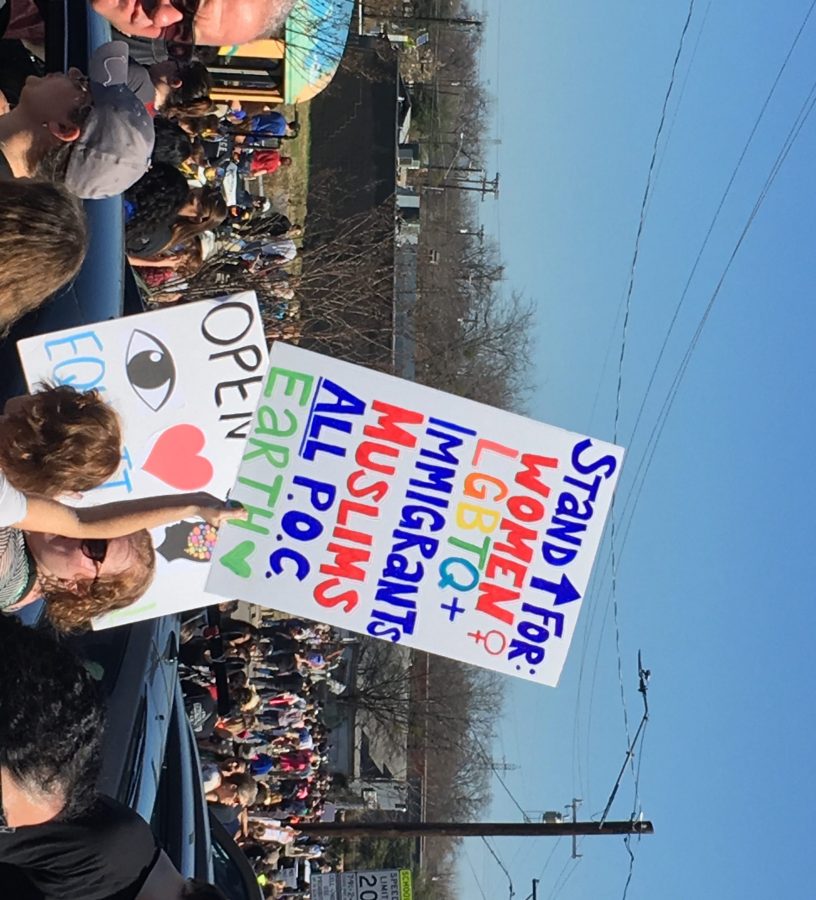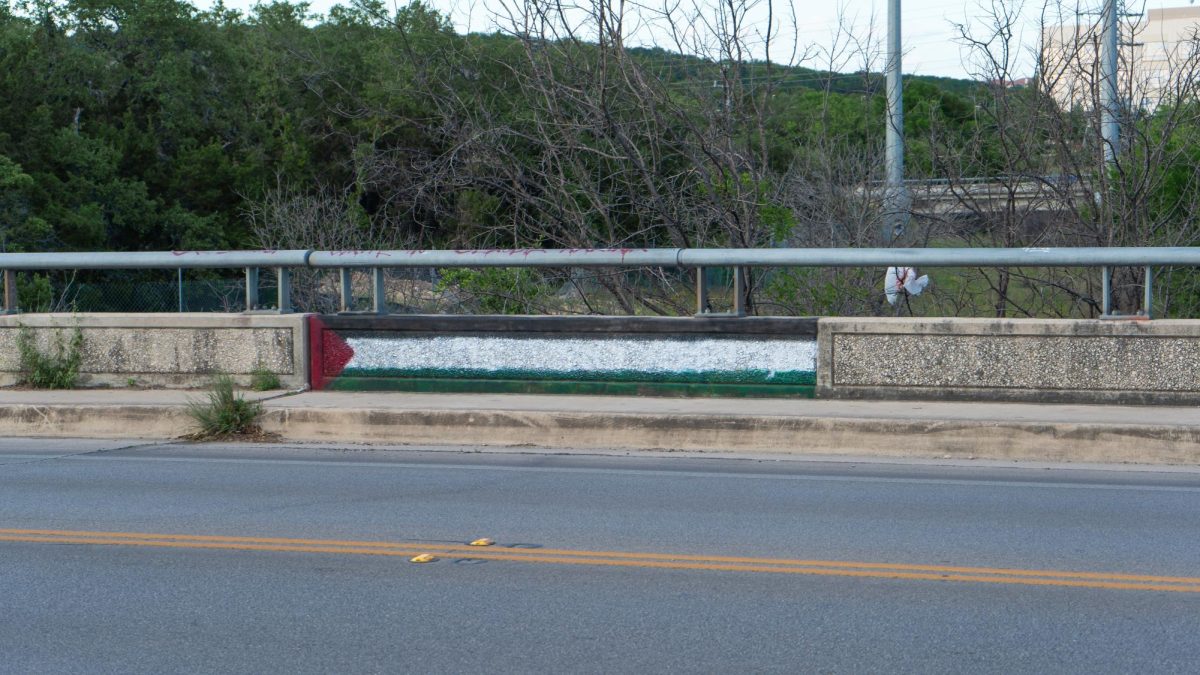The chants were coming from quixotic speakers all throughout the procession. At one moment, the classic call and response “What do we want?” “Justice!” “When do we want it?” “Now!” was initiated by a little girl brandishing a gavel much larger than her tiny hands.
She was dressed as Supreme Court Justice Ruth Bader Ginsburg.
At another moment, a veteran gutturally shouted the chant “equal work for equal pay” to the cadence of a Marine incantation, goading the crowd to repeat after him.
A small act of serendipity took place as the mass of protesters passed the downtown Sheriff’s Office.
Summoned by the chant “prisoner’s rights are human rights,” an inmate in an orange uniform ran to the window of his jail cell a few floors above the street to wave ecstatically down to those below.
These were some of the scenes from the “Mujeres Marchan,” Spanish for “Women March,” event that took place in the morning and afternoon hours of this past Saturday in San Antonio. For Victoria Guajardo, a communications senior at UTSA, the reason to get out on the streets is personal.
“It is especially important for women to march because when OUR rights are threatened, when OUR accessibility to certain institutions is threatened, EVERYONE is threatened,” she said.
An age, gender, sexuality, racially, ability, legal-status diverse crowd of San Antonians amassed as others did across the nation in places such as Chicago, New York, Los Angeles, Atlanta, Austin, Denver and more in a broad reproach of President Donald Trump but also a of myriad of problems to register anger against the political status quo.
Billed as the “D.C. Women’s March,” organizers coordinated copy-cat marches.
Erica Chenoweth, a scholar in the emerging field of “nonviolent studies” at the University of Colorado collected data on participation in the day of action and concluded that over 3.3 million people took part in the event.
The San Antonio march began in front of City Hall and continued westward for 1.92 miles, stretching through to the barrios on the Westside of I-10. Police on motorcycles stationed themselves on the perimeter of the crowd. Between the crowd and the officers were ad-hoc volunteer “peacekeepers” distinguished by their red shirts. Acting as a barrier between those in the march, police and potential agitators, the peacekeepers were additionally responsible for setting the walking pace of the crowd and sending messages up and down the column so that the speed of things remained in step with the slowest marchers.
The march was entirely peaceful, with only one minor, barely qualified episode of harassment.
Compared to the couple thousand who were marching, one disgruntled Cowboys jersey-wearing resident who walked to his street corner to yell at protesters was basically imperceptible.
“Saturday was really refreshing and beautiful. It was just so empowering and being out there con mi gente made me feel like I wasn’t alone,” said Guajardo
Although the march functioned in many ways as an example of what social movement scholar Charles Tilly abbreviated as “WUNC;” an opportunity for protesters to show their worthiness, unity, numbers and commitment, some have pointed out that even “resistance” can suffer from exclusionary ideas that damage our unity.
“Organizers will reach out to police in advance to plan out routes and ways to keep the peace, which to me, seems to render the entire march ineffective because it didn’t disrupt much of anything. Police redirect traffic and protesters stay on sidewalks, so what’s left is an impressive photo op…a symbolic gesture as opposed to direct action,” said local trans musician and writer Polly Anna Rocha.
Another criticism of some of the sentiments on display at the Women’s marches stems from their cis-centered rhetoric. When posters read things like “this p***** grabs back,” the attempted attacks on Trump’s reputation of sexual assault turn trans-exclusionary.
Rocha didn’t march because she felt the event suffered from lazy trans-exclusionary, white-centered feminism and ineffective symbolic tactics. As she reminds us to know “not all women have vaginas and not all men have penises.” For her, the reduction of both people and resistance to body parts is corny.
Mae Darrin, a business management senior, who couldn’t attend a march because she was sick saw the day as galvanizing and she plans to get involved locally.
“Now is the time to speak up and fight like hell for what we believe in. One of my resolutions this year is to attend more neighborhood meetings. It’s a great and easy way to speak to your representative in person about the issues you are passionate about,” she said.
President Trump’s response to the marches came in form of tweets such as “celebrities hurt the cause badly” and “why didn’t these people vote?”
According to the Brennan Center for Justice, between 2011 and 2015, 395 new voter restrictions were enacted.
Trump might be working with “alternative facts,” or the former apprentice star doesn’t realize the irony in his words.












